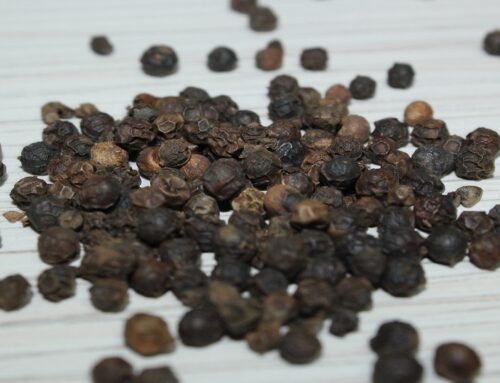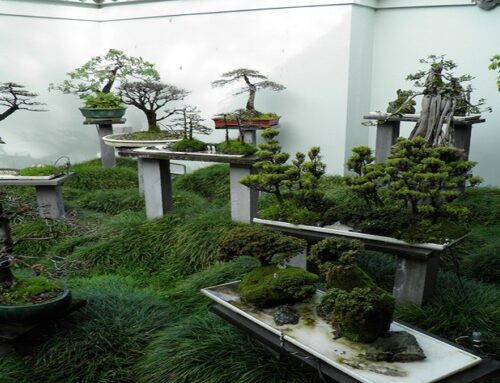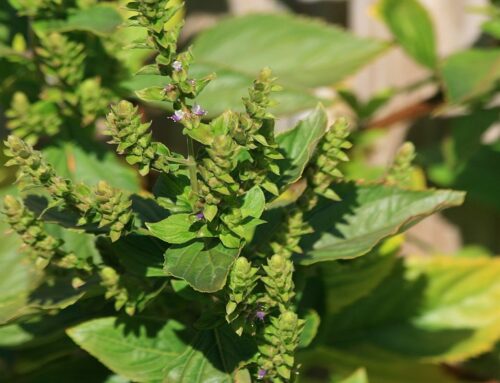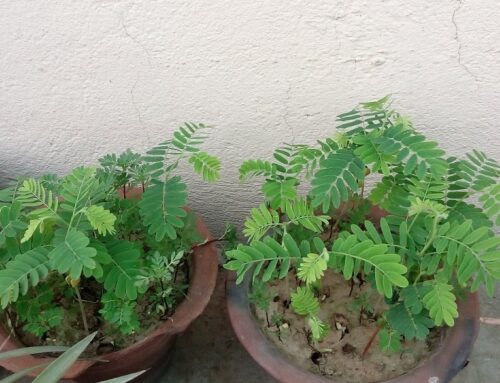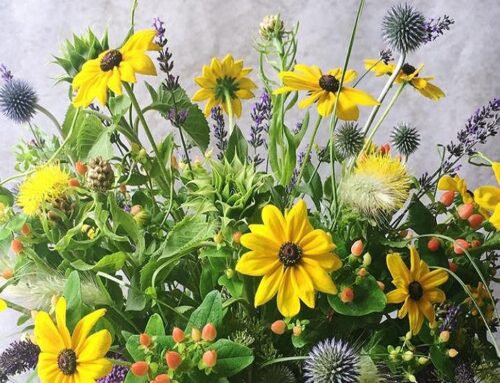You may grow any number of plants in your garden according to your taste and requirements. Climate and soil conditions of your locality should also be considered while choosing plants for your home garden. Generally, a mixture of flowering and foliage plants are selected for a garden. Flowering plants may contain both fragrant and non-fragrant plants. Plants may be either annuals or perennials.
Growing Herbs and Annuals
Small herbs are suitable for making edges around the flower beds and flowering annuals may be used to create flower beds. Flowering annual herbs may be used to create herbaceous border along the boundary wall of the garden. While creating herbaceous borders, herbs may be planted and arranged according to their height. i.e. short annuals are planted in the front, medium annuals in the middle and tall annuals in the back.
Growing Shrubs
Shrubs of different groups may be grown in creating shrubbery borders. A shrubbery border is a special area devoted exclusively for growing shrubs along the borders of the garden. A shrubbery border may be established right in front of trees, which are normally planted alongside the fence of the garden. Shrubs are arranged according to their heights in a shrubbery border Shrubs are also used for making hedges, i.e. group planting of similar evergreen shrubs to create a mass effect.
Shrubs are hardy plants and grow in any garden soil. Propagation is mainly via seeds, cuttings, and layering. 60 cm deep pits are dug in the garden for planting a shrub plant. Top soil mixed with organic manures is used to refill the pit. Soon after planting a shrub plant, light watering is done. Frequent watering is recommended until the plants get established and after that, shrubs do not require much watering except during scorching summers.
Growing Climbers
Climbers may be planted in any garden soil. Both pot planting and field planting are practiced for raising garden climbers. In case of pot planting, generally pots of 60x60x60 cm size are used.
There are two types of garden climbers: evergreen climbers and deciduous climbers. Evergreen climbers may be planted soon after the rains and deciduous climbers are planted during early summers. Staking or a support system is strongly recommended for garden climbers. Regular watering, weeding and hoeing are recommended for raising healthy climbers.
Bougainvillea is a popular climber among the gardeners and it is used as a pot plant as well as a hedge plant. Garden climbers like pothos, monstera, philodendron, asparagus, and trailing nasturtium are popular for indoor gardening and interior decoration.
Growing Bulbous Plants
Generally a cool climate is preferred by the bulbous plants. Still there are some warm season bulbs as well. So based on their climatic requirements, bulbous plants may be grouped into two groups: warm climate bulbous plants and cool climate bulbous plants. Major warm climate bulbous plants are canna, dahlia, tuberose, crinum, and zephyranthes and cool climate bulbous plants are daffodils, narcissus, freesia and gladiolus.
General growing requirements for bulbous plants are moderately cool weather, high humidity, and moist soil. Sandy loam soils with good moisture retention capacity and having a pH between 7.0 and 8.0 are the most ideal soil conditions for bulbous plants. Propagation is via division of bulbs or corms or rhizomes or tubers depending upon the type of the plants.
Pot Planting of Bulbous Plants
Pots of any size may be used according to the grower requirements. Pot mixture should be prepared by adding 2 parts sand, 2 parts leaf mould, 2 parts well-rotten farm yard manure or garden compost, 1 part garden soil and 0.5 part of charcoal.
Manuring of Bulbous Plants
5 kilograms of farm yard manure or garden compost may be applied for one square meter area.
Planting of Bulbous Plants
Cool climate bulbous plants are planted during winter while canna species are planted during rainy season. Warm climate bulbous plants are planted during spring or early summer. Planting materials are carefully placed into the pits prepared in the field. Recommended depth of planting a bulb or tuber is approximately 10-20 cm deep into the pits. Recommended spacing is 30cm between two rows and 20 cm between two plants.
Other Cultural Practices
Regular weeding is recommended for weed control and hoeing for providing aeration to the root zone of the plants. Irrigation should be done at least once in two weeks during winters and once in every week during summers. Staking is recommended for providing support to the growing plants.
Growing Shade Loving Plants
Shade loving plants should be grown away from direct sunlight. Friable, well-drained soils but not very rich are most ideal soil requirements. Rich and highly fertile soils are avoided because these soils stimulate unwanted plant growth which is undesirable for plants grown for display and decoration purposes. Hence it is recommended that overfeeding should be avoided Fertilizer application is recommended only once in a year. While fertilizing the plants, liquid manuring or foliar application with urea or bone meal may be practiced. Repotting is recommended once in a year during rainy season.
How to Prepare a Potting Mixture for Shade Loving Plants
Mix 2 parts garden soil, 1 part sand, 2 parts leaf mould and 1 part of well-rotten farm yard manure or garden compost to prepare an ideal potting mixture for growing shad loving plants in pots or any other containers.
Growing Cacti and Succulents
Cacti and succulents require sunny situations with plenty of sunlight for their healthy growth. Soil should be porous. Rich calcareous soil is the most ideal soils for this group of plants.
How to Prepare Pot Mixture for Cacti and Succulents
Mix 2 parts garden soil, 1 part sand, 1 part leaf mould, 1 part well-rotten farm yard manure or garden compost, 1 part limestone gravel and 0.5 part charcoal to prepare an ideal potting mixture for growing cacti and succulents in pots or in any other containers.
Plant Nutrition
Small amounts of bone meal may be added to provide plant nutrition. However, chemical fertilizers should be avoided because cacti and succulents are sensitive to chemicals and excess application of chemicals results in rotting of the plants.
Propagation
Seed propagation is possible but it takes long time. Hence vegetative propagation by division of clumps is the most popular propagation method for cacti and succulents. Grafting is also popular.
Watering
Cacti and succulents, generally, do not need frequent watering. During summers light watering may be done at weekly intervals.
Check out our publishing services here…
We publish top quality videos on various ‘Food & Agriculture’ topics. You may subscribe our video channel here…


